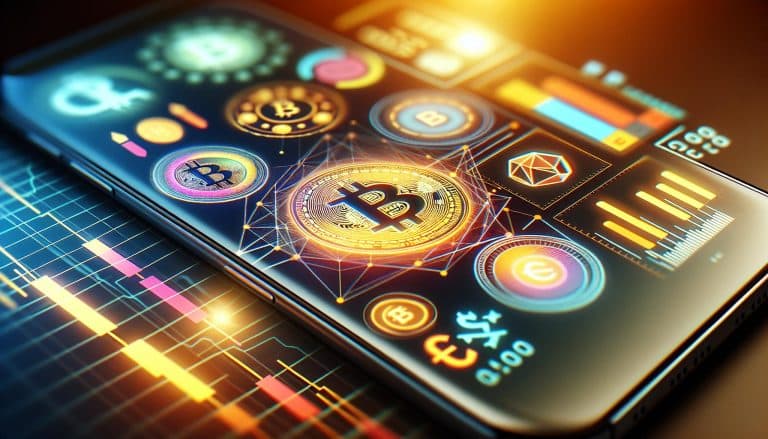Global Financial Implications Of Xrp
XRP, the third largest cryptocurrency by market capitalization, has caused a stir in the global financial markets. It has created a new arena for cross-border payments and could potentially disrupt the traditional banking system. To illustrate its potential, consider the case of Ripple Labs Inc., which uses XRP to facilitate international payments. This company was able to reduce transaction costs from $30 per payment to just fractions of a penny using XRP’s blockchain technology. The implications of this development are far-reaching and have prompted many to investigate the impact of XRP on global finance. In this article, we will explore the potential benefits and risks of investing in XRP, its current position in the cryptocurrency market, and its future outlook within the context of regulation and global economy.
Overview of XRP
XRP is a digital asset and payment protocol that has been developed to enable fast, secure, and low-cost payments across global financial systems. It is gaining institutional acceptance as it can be used for both real world usage and banking applications, allowing it to bridge the gap between the traditional banking system and cryptocurrency networks. XRP’s potential to disrupt the traditional banking system by providing faster and more secure transactions at a lower cost could have far-reaching consequences on the global financial landscape.
XRP’s Potential to Disrupt the Traditional Banking System
Ripple’s blockchain technology has the potential to revolutionize the traditional banking system by providing a faster, more secure payment network, with average transaction speeds of just 4 seconds and transaction costs as low as a fraction of a penny. It has innovative uses such as using smart contracts for compliance and anti-money laundering purposes, which can provide an extra layer of security in cross-border payments. XRP is also being used to create liquidity for other digital assets that are not easily moved across borders due to regulatory restrictions. These features make XRP an attractive option for businesses looking to reduce time delays and fees associated with traditional banking systems. As such, Ripple’s distributed ledger technology could have significant implications on the global financial landscape moving forward. To capitalize on these opportunities, organizations need to understand how best to implement this technology into their operations in order to gain maximum benefit from it. Moving forward, understanding the benefits of XRP for cross-border payments will be critical in order to capitalize on its potential disruption of the traditional banking system.
Benefits of XRP for Cross-Border Payments
The distributed ledger technology of Ripple has the potential to provide a faster, more secure payment network with significant benefits for cross-border payments. XRP offers scalability benefits by allowing payments to be sent and received at much higher speeds than traditional banking systems. This allows businesses to send and receive funds more quickly, reducing transaction costs and increasing efficiency overall. Additionally, XRP’s blockchain technology eliminates the need for multiple intermediaries when making cross-border payments, further reducing transaction times and fees. Therefore, due to its scalability benefits and ability to reduce transaction speeds, XRP could have a positive impact on global financial implications in regards to cross-border payments. Without these considerations taken into account, there can be risks associated with investing in XRP that should not be overlooked.
Risks of Investing in XRP
Ripple’s XRP cryptocurrency has seen considerable success in the last few years, but like any asset class, investors should be aware of the risks that accompany investing in XRP. Regulatory uncertainty is a key risk that comes with investing in cryptocurrencies – while some countries have adopted a friendly stance towards crypto investments, many governments have yet to make definitive statements on their regulation of digital assets. In addition, volatility is an inherent risk associated with all cryptocurrencies; its unpredictable nature makes it difficult for investors to plan and manage their investments. Finally, lack of adoption is another risk factor investors must consider when thinking about investing in XRP as it does not currently hold widespread acceptance as a form of payment or investment asset.
Regulatory Uncertainty
Regulatory uncertainty surrounding XRP has resulted in potentially significant financial implications for the global market. With increasing speculation as to how the currency will be regulated, investors must consider the ripple effects of such an outcome and its influence on investor confidence. Several factors can contribute to this uncertainty, including:
- Political Uncertainty: Political changes around the world may affect how XRP is regulated and perceived by investors. This could lead to volatility in prices, which could have a negative impact on investor confidence.
- Legal Uncertainty: Legal frameworks related to cryptocurrency are constantly evolving and new regulations are being introduced at different levels of government worldwide. As a result, it is unclear what regulatory framework will apply to XRP investments and transactions, leading to potential financial risks for investors.
This regulatory uncertainty has created an environment of extreme volatility that could have long-term implications for the global economy if not addressed properly. Transitioning into this volatile environment requires careful consideration and understanding of both current and future legal frameworks governing cryptocurrency investments.
Volatility
The regulatory uncertainty that surrounds the use of XRP has been an important factor in determining its global financial implications. While this remains a significant variable, volatility is another key element to consider. Volatility in asset prices can significantly affect how liquid the asset is and influence the decisions of potential investors. The price of XRP is highly volatile; it has experienced extreme fluctuations since its launch in 2013. Such volatility can create liquidity issues, making it difficult for investors to enter or exit positions quickly. In addition, high volatility makes predicting future prices very challenging, further deterring potential investment. Therefore, volatility presents a unique challenge when looking at global financial implications related to XRP investments. This instability could be a major hindrance to widespread adoption which will be discussed in the subsequent section.
Lack of Adoption
Despite its potential, the lack of widespread adoption of XRP presents a significant obstacle to realizing its full value. Trade wars, liquidity issues and other factors have contributed to a slow uptake of XRP as a financial instrument. Despite this, Ripple Inc., the San Francisco-based company behind XRP, has continued to invest in technology and partnerships for increased usage:
- Ripple Inc. has established strategic partnerships with major banking institutions such as Santander, American Express and MoneyGram.
- These partnerships are aimed at introducing new payment systems using XRP as the core technology.
- Ripple Labs has also developed an open source codebase that allows users to interact with blockchain networks without needing any private keys or digital wallets.
However, until these efforts result in mass adoption of XRP by major players in global finance, it will remain difficult for the cryptocurrency to gain real traction in terms of use cases and market capitalization. As such, there is still much untapped potential for XRP to become a major player in global finance if its developers can manage to overcome some key challenges facing it today.
Potential for XRP to Become a Major Player in Global Finance
Though XRP is not yet widely adopted, its potential for becoming a major player in global finance cannot be overlooked. With the rise of institutional adoption and market stability, XRP has been gaining momentum to become one of the most influential digital currencies in the world. Its technology, fast transactions, low fees and scalability make it an attractive option for financial institutions that are looking to reduce costs and increase efficiency. Moreover, its decentralized nature makes it secure and reliable as compared to other cryptocurrencies. As more financial institutions adopt XRP, its impact on the global economy will become increasingly evident as it enables faster payments with reduced transaction costs across borders.
XRP’s Impact on the Global Economy
The increasing adoption of XRP has the potential to significantly impact the global economy. As a digital asset, XRP harnesses blockchain technology which enables faster and more efficient transactions than traditional methods. This is transforming the way financial services companies operate and enhancing their competitive edge in this ever-evolving digital age. Moreover, XRP’s application for international payments could potentially reduce fees associated with money transfers and increase liquidity on an international level. Through this digital transformation, XRP may lead to greater economic efficiency worldwide by facilitating smoother trade flows between countries that have different currencies or payment systems.
The implications of XRP go beyond just its impact on the global economy; it also has a place in the cryptocurrency market as well. Its use as a bridge currency across different markets can help boost liquidity while reducing transaction costs for businesses using it to transfer money internationally. Additionally, its rising popularity among investors makes it an attractive option for those seeking high returns on investments in another asset class outside of traditional stocks and bonds. Ultimately, the potential benefits that XRP may bring to global finance remain largely unknown but its growing usage suggests that it could become increasingly important in the future.
XRP’s Place in the Cryptocurrency Market
XRP has become increasingly prevalent in the cryptocurrency market, with its usage likened to a bridge connecting different markets and reducing transaction costs. XRP is built on blockchain technology that enables real-time payments and currency exchanges with no or low fees. This makes it attractive to those looking for alternatives to traditional banking systems. Additionally, XRP can be mined, which gives it an edge over other cryptocurrencies due to the potential of earning rewards through mining activities. The nature of XRP’s blockchain technology also offers security features such as distributed consensus, which helps protect against data tampering and fraud. With this in mind, XRP is well positioned to provide more efficient financial solutions for global transactions compared to traditional banking systems. As such, its presence in the cryptocurrency market should continue to grow in the future. Looking ahead, regulatory environment surrounding cryptocurrencies will have a significant impact on how XRP is viewed and used by individuals and businesses alike.
Regulatory Environment
As the cryptocurrency industry continues to develop, the regulatory environment surrounding XRP is becoming an increasingly important factor in its potential success. Notably, a recent survey by Ernst & Young found that 74% of people believe that government regulation will have a positive impact on the industry. To ensure legal compliance, companies dealing with XRP must also adhere to banking reform laws and regulations in order to secure financial stability. As such, it is essential for these organizations to stay up-to-date with current regulations and understand potential risks associated with their operations. Going forward, the regulatory environment will play a key role in determining XRP’s future in global finance.
XRP’s Future in Global Finance
With the changing regulatory environment, XRP’s potential impacts on global finance have become increasingly relevant. XRP is a blockchain-based token issued by Ripple, originally created to be used as a digital asset for payments and remittances. It has since become an important part of the global financial system due to its potential for tokenization of assets, facilitating interoperability between different currencies, and providing more efficient payment systems than traditional methods.
The adoption of XRP as an accepted form of currency could lead to a variety of changes in global finance. Tokenization would allow businesses and individuals to access new markets and transfer funds quickly and securely with reduced fees. Interoperability between different currencies would reduce costs associated with exchanging currency or using services that require foreign exchange rates. Finally, faster payments could improve liquidity in financial markets due to the increased speed at which transactions can take place without needing to wait for third-party verification or clearance from banks or other institutions. These impacts could revolutionize how people interact with money globally and provide greater access to capital across borders.





 Bitcoin
Bitcoin  Ethereum
Ethereum  Tether
Tether  XRP
XRP  USDC
USDC  Wrapped SOL
Wrapped SOL  TRON
TRON  Lido Staked Ether
Lido Staked Ether  Dogecoin
Dogecoin  Figure Heloc
Figure Heloc  Cardano
Cardano  WhiteBIT Coin
WhiteBIT Coin  Bitcoin Cash
Bitcoin Cash  Wrapped stETH
Wrapped stETH  Wrapped Bitcoin
Wrapped Bitcoin  USDS
USDS  Wrapped eETH
Wrapped eETH  Binance Bridged USDT (BNB Smart Chain)
Binance Bridged USDT (BNB Smart Chain)  Chainlink
Chainlink  Monero
Monero  LEO Token
LEO Token  WETH
WETH  Zcash
Zcash  Stellar
Stellar  Coinbase Wrapped BTC
Coinbase Wrapped BTC  Ethena USDe
Ethena USDe  Hyperliquid
Hyperliquid  Litecoin
Litecoin  Sui
Sui  Avalanche
Avalanche  Hedera
Hedera  sUSDS
sUSDS  Shiba Inu
Shiba Inu  Dai
Dai  USDT0
USDT0  Canton
Canton  Toncoin
Toncoin  PayPal USD
PayPal USD  World Liberty Financial
World Liberty Financial  Uniswap
Uniswap  Cronos
Cronos  Ethena Staked USDe
Ethena Staked USDe  Mantle
Mantle  USD1
USD1  Polkadot
Polkadot  Rain
Rain  Bitget Token
Bitget Token  MemeCore
MemeCore